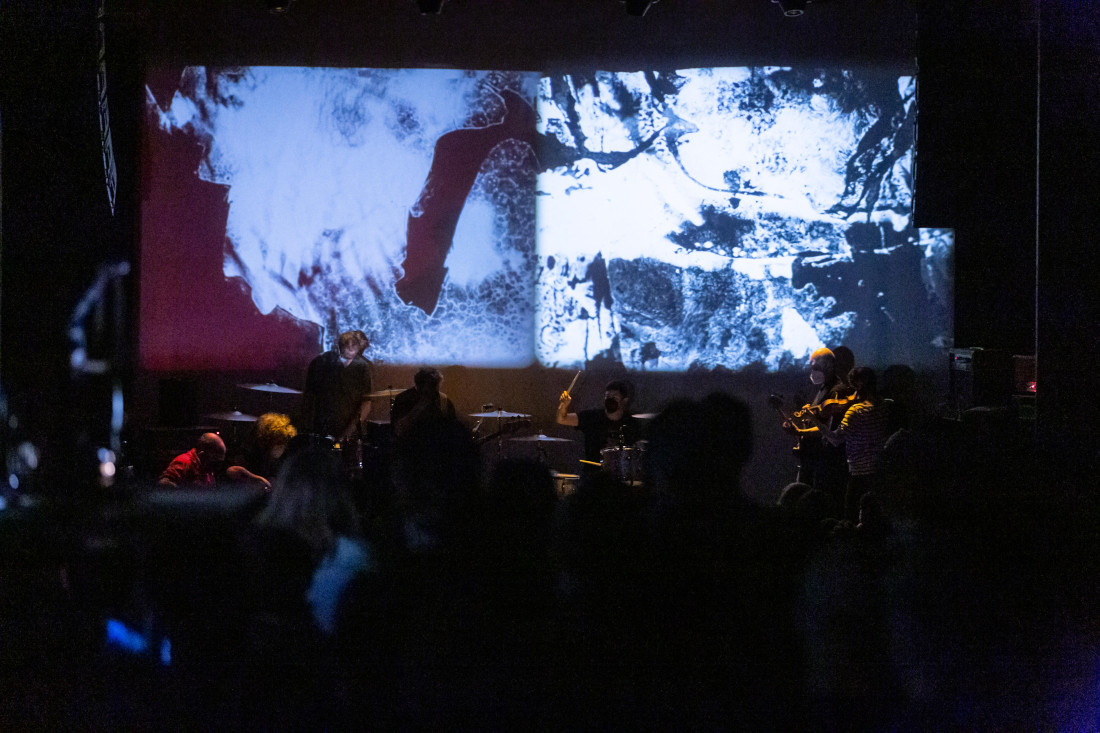Critipeg: ‘We are not ruined’
Art in the face of indifference and Godspeed You! Black Emperor
In an interview for Ric Burns’ New York (1999), urban theorist Marshall Berman discusses the role of graffiti and hip-hop in 1970 and 1980s New York. Berman refers to these forms of expression as proverbial rainbows cutting through New York’s then bleak and derelict landscapes.
To Berman, against the backdrop of urban neglect, artistic expressions are statements that people are continuing to survive in defiance of the decay around them. He sums up his thoughts in the poignant line “We come from ruins, but we are not ruined.”
The music of Godspeed You! Black Emperor (GYBE), who on March 17 played a show at the Park Theatre, has always attempted to impart a similar message. Despite their dystopian tone, GYBE has focused centrally on the role of hope in the face of an oppressive world. The band’s discography has countless moments where swells of overpowering fuzz are broken through by crescendos that emphasize the beauty that must be held on to.
Much like Berman’s depiction of New York in the ’70s, GYBE’s description of ’90s Montreal is that of a city in decline left to its own devices. Their music is made in defiance of that neglect and the greater suffering of the world.
I have always perceived clear parallels between these places, Winnipeg and the defiance of artistic expression. Winnipeg is a city that often feels like it is actively being left behind. Despite the seeming indifference of the world, Winnipeg’s citizens press on through creative and collective expressions in a display of the city’s immense spirit.
The uncertainties and struggles of the past couple of years has made GYBE’s catalogue all the more indispensable. With these feelings and expectations, I was left deeply ambivalent following their recent show. It felt as if what I saw as the band’s central message – hope – was lost.
The message of hope was present. The show began with the requisite “hope drone” and ended with projections of natural life, specifically pollination. Beyond these moments, much of the show was filled with imagery of burning forests, police violence, monolithic modern architecture and government secrets. It felt almost gratuitous.
When GYBE started in the ’80s and ’90s, showcasing the evils of imperialism, capitalism and other injustices was very much within the countercultural milieu of the time. Bands such as the Dead Kennedys, Rage Against the Machine or Public Enemy felt they had to open the eyes and ears of their listeners to the injustices of the world to enable them to fight the power.
In contrast to that era, individuals are now viscerally confronted with the realities of the world. What is needed of bands like GYBE today are statements of how people survive in a broken world, find hope or fight back. These messages are present in the music of GYBE, but at their show, this element lacked emphasis. In my mind, the band focused too heavily on the ruins instead of the fact that we are not ruined.
Patrick Harney is pursuing his MA in environmental and social change at the University of Winnipeg, focusing on the relationships between culture, nature, risk and resilience
Published in Volume 76, Number 24 of The Uniter (April 7, 2022)








